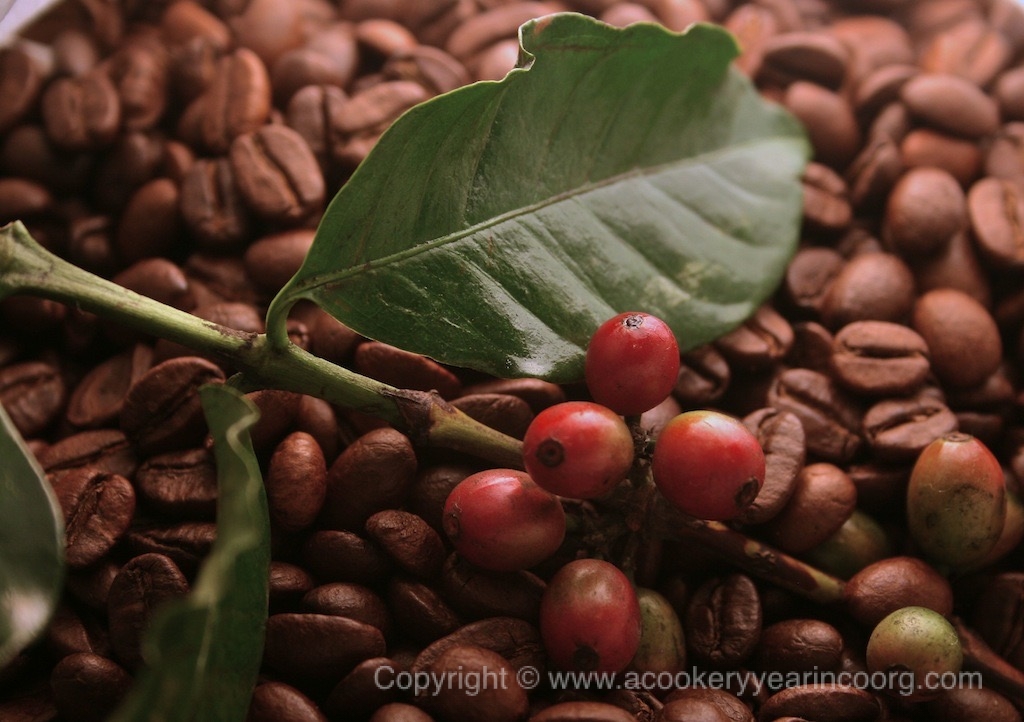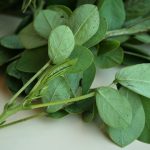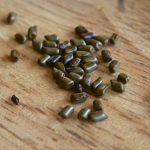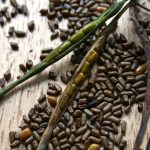When is coffee not coffee? (Let me answer that before the pet peeves about bad coffee come spilling forth!)
When it’s coffee tea. And no, this isn’t the old joke about establishments that serve atrocious brews of tea and coffee that are indistinguishable from one another. 🙂
Earlier this year, in January, when coffee harvesting was in full swing in Coorg, I read a curious report doing the rounds in the news about “coffee leaf tea”. That’s right, a tea made from coffee leaves!
“The researchers at the Royal Botanic Gardens in Kew, London, and the Joint Research Unit for Crop Diversity, Adaptation and Development in Montpellier, believe coffee leaves could provide a new, healthy drink to rival coffee and traditional green or black tea.”
As it turns out, tea brewed from coffee leaves is well known in Ethiopia, Sudan and Indonesia, but early attempts to introduce it elsewhere never caught on. By most accounts, it makes a pleasant enough drink, albeit one with no caffeine, and definitely none of that enticing roasted coffee bean aroma. It may become the next trendy antioxidant on the block, but I’m guessing that coffee farmers in Coorg and elsewhere are not going to be scrambling to pick “two leaves and a bud” next season!
And the other black coffee? It’s all in the name, really. Cassia tora (Senna tora) is not a plant I’d paid any attention to at all. I’ve seen it growing in ditches and hedgerows in Coorg, its pretty yellow flowers adding a nice accent to all the greenery. Then, I encountered it in my wanderings through the Konkani culinary landscape. The wonderful Saraswat cookbook, Rasachandrika, has recipes for leaves of “negro coffee”*, which, it turns out, is Cassia tora. This shrub grows wild all over the countryside in India, pretty much anywhere it hasn’t been manicured out of the picture for being a weed!
In the Kodava language, it’s known as thaaté thoppu. Some say it’s very like fenugreek and, while it does bear some resemblance, to my mind it’s not as pleasantly fragrant. The leaves, which have a sturdy texture, are most commonly eaten cooked in a simple stir fry. Besides having many medicinal uses, including topical applications for skin conditions, the plant has good nutritive value. The leaves are high in calcium and protein, and are a valuable source of vitamins. They can also be dried for storage. The seeds, roasted and ground, are brewed into a coffee substitute.
So would they make a cup of negro coffee tea, or negro coffee coffee? 🙂
Thaaté thoppu palya
Pick tender leaves and shoots (flowers too) from plants growing away from polluted areas.
- 2 tbsp coconut oil
- 1 large onion, finely sliced
- 2-3 green chillis, slit
or
2-3 dry red chillis, broken into large bits - 4 cups packed Cassia tora leaves and tender shoots (chop finely for a more intense flavour)
- 2 tbsp grated coconut (optional)
- A pinch of rock salt
Heat the oil in a pan and fry the onions for a couple of minutes, then add the chillis. Cook for a minute, then add the thaaté thoppu. Stir to mix, cover, and cook on a low flame until the leaves are tender. Add salt to taste and sprinkle on fresh coconut if using.
Eat in moderation – it does have a mildly laxative effect!
*A related plant, Cassia occidentalis (Senna occidentalis) is more often referred to as to as “negro coffee”, but in this instance it is Cassia tora.




